20+ A Prokaryotic Cell Wall That Has Primarily Peptidoglycan
Electron micrographs show that its cell envelope contains a three-layered structure Fjellbirkeland et al 1997. Peptidoglycan is absentThis characteristic makes them naturally resistant to antibiotics that target cell wall synthesis like the beta-lactam antibioticsThey can be parasitic or saprotrophicSeveral species are pathogenic in humans.

Prokaryote Structure Article Khan Academy
The cells cytoplasm and vacuole contribute to the onions solidity and its characteristic crisp texture.
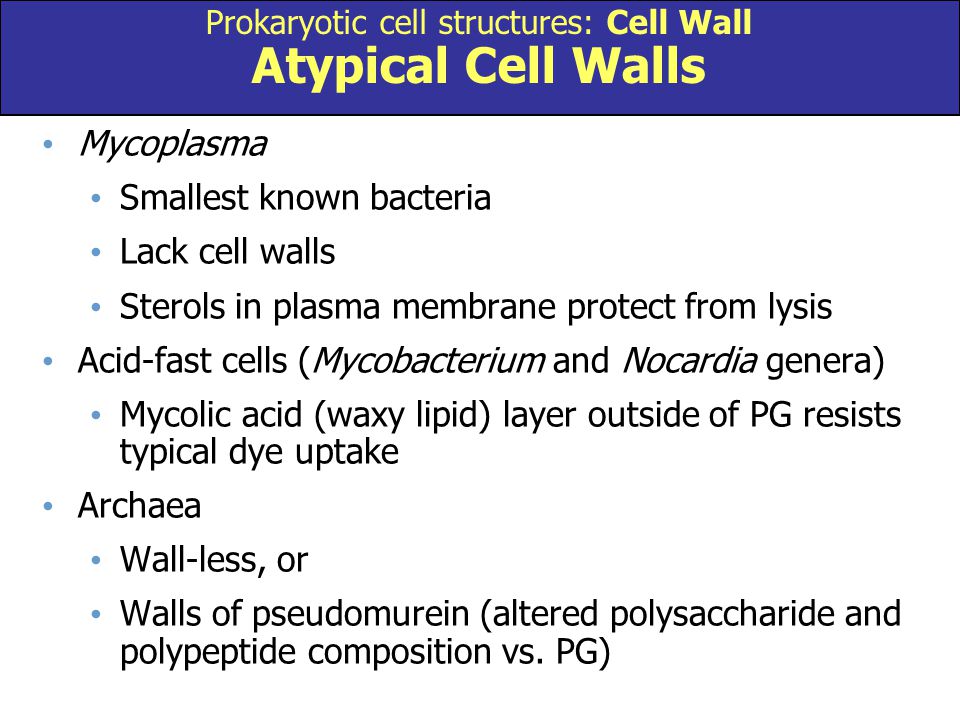
. Archaeal cells have unique properties separating. Peptidoglycans are unique to prokaryotic organisms and consist of a glycan backbone of muramic acid and. Study with Quizlet and memorize flashcards containing terms like Some proteins within a cell can be viewed with A the human eye B a dissecting microscope C a light microscope D a magnifying glass E an electron microscope Carrie would like to observe the cilia on the surface of a live paramecium- a single-celled organism.
While the field of microbiology is ever-changing this book is mostly sufficient to give the foundations to. Along with cell shape Gram staining is a rapid method used to differentiate bacterial species. Mycoplasma is a genus of bacteria that like the other members of the class Mollicutes lack a cell wall around their cell membranes.
Common shapes include spherical coccus rod-shaped bacillus or curved spirillum spirochete or vibrio. Important Chemical Components of Surface Structures. Some of these are lipoteichoic acids which have a lipid component in the cell membrane that can assist in anchoring the peptidoglycan.
Bacterium are ubiquitous mostly free-living organisms often consisting of one biological cellThey constitute a large domain of prokaryotic microorganismsTypically a few micrometres in length bacteria were among the first life forms to appear on Earth and are present in most of its habitatsBacteria inhabit soil water acidic hot. The prokaryotic cell has the fimbriae labeled as pili. Closely related part of the Opisthokonta supergroup.
Archaea ɑːr ˈ k iː ə ar-KEE-ə. In Gram-negative organisms the cell wall is composed of a plasma membrane a peptidoglycan layer that comprises approximately 10 of the cell wall and an outer membrane made of lipopolysaccharides and lipoproteins. The envelope gives rigidity to the cell and separates the interior of the cell from its environment serving as a protective filter.
This is a characteristic feature of the gram-negative cell envelope Silhavy et al 2010 and starting from the cell exterior the three layers comprise the outer membrane OM the peptidoglycan layer and the inner membrane. Bacteria are prokaryotic because their genetic material DNA is not housed within a true nucleus. Plant cells are similar and typically rectangular or cube-shaped.
Animal cells vary in shape and are generally irregular due to the lack of a cell wall. Specific to gram-positive bacteria is the presence of teichoic acids in the cell wall. Gram-negative bacteria are bacteria that do not retain the crystal violet stain used in the Gram staining method of bacterial differentiation.
For nearly a century soil organic matter SOM formation in conceptual and quantitative models has been depicted primarily as a function of plant inputs and their chemistry 123As such. The term comes from the Latin word cellula meaning small room. In prokaryotes the primary function of the cell wall is to protect the cell from internal turgor pressure caused by the much higher concentrations of proteins and other molecules inside the cell compared to its external.
Gram-negative bacteria are found in virtually all. Diagram of a typical prokaryotic cell. In cell biology an organelle is a specialized subunit usually within a cell that has a specific functionThe name organelle comes from the idea that these structures are parts of cells as organs are to the body hence organelle the suffix -elle being a diminutiveOrganelles are either separately enclosed within their own lipid bilayers also called membrane-bound organelles or.
The thick layers of peptidoglycan in the Gram-positive cell wall stain purple while the thin Gram-negative cell wall appears pink. In contrast the cell wall of Gram-positive. Below the cell wall is a layer of liquid called the cytosol primarily composed of water salts and organic molecules.
The whiskers indicate the 5 and 95 percentiles. They can be flat round oval rectangular concave rod-shaped or spherical and are mostly defined by the function they perform. Clades were considered as likely composed primarily of phages if 50 of the predicted ORFs were associated with an SD motif after excluding genes predicted on the edges of.
Cells can acquire specified function and carry out various. The cell is the basic structural and functional unit of life formsEvery cell consists of a cytoplasm enclosed within a membrane and contains many biomolecules such as proteins DNA and RNA as well as many small molecules of nutrients and metabolites. Most bacteria have cell walls that contain peptidoglycan.
The best device to do this would be a A. The 18 S rRNA gene of ciliates has been used to aid species identification and protozoal community analyses 192021 but it has several limitations in proposing a robust taxonomic framework. The cell membrane consists of a lipid bilayer made up of two layers of phospholipids with cholesterols a lipid.
They are characterized by their cell envelopes which are composed of a thin peptidoglycan cell wall sandwiched between an inner cytoplasmic cell membrane and a bacterial outer membrane. Singular archaeon ɑːr ˈ k iː ə n is a domain of single-celled organismsThese microorganisms lack cell nuclei and are therefore prokaryotesArchaea were initially classified as bacteria receiving the name archaebacteria in the Archaebacteria kingdom but this term has fallen out of use. Both Gram-positive and Gram-negative bacteria possess cell wall peptidoglycans which confer the characteristic cell shape and provide the cell with mechanical protection.
3 This text is written to give the basics of microbiology throughout. A cell wall is a structural layer surrounding some types of cells just outside the cell membraneIt can be tough flexible and sometimes rigid. By combining morphology and Gram-staining most bacteria can be classified as belonging to one of four groups Gram-positive cocci Gram-positive bacilli Gram-negative cocci and Gram-negative bacilli.
Enclosing the cell is the cell envelope generally consisting of a cell wall covering a plasma membrane though some bacteria also have a further covering layer called a capsule. A chloroplast ˈ k l ɔːr ə ˌ p l æ s t-p l ɑː s t is a type of membrane-bound organelle known as a plastid that conducts photosynthesis mostly in plant and algal cellsThe photosynthetic pigment chlorophyll captures the energy from sunlight converts it and stores it in the energy-storage molecules ATP and NADPH while freeing oxygen from water in the cells. The bar shows the median value across 100 independent samples of one member of a family with at least 20 members.
It provides the cell with both structural support and protection and also acts as a filtering mechanism. The cell envelope is composed of the cell membrane and the cell wallAs in other organisms the bacterial cell wall provides structural integrity to the cell. Water within the cell walls gives the walls strength and helps plants resist the force of gravity.
The cell walls in Gram-negative and Gram-positive bacteria differ considerably. The cell membrane also known as the plasma membrane PM or cytoplasmic membrane and historically referred to as the plasmalemma is a biological membrane that separates and protects the interior of all cells from the outside environment the extracellular space. Cell walls are absent in many eukaryotes including animals but are present in some other ones like fungi algae and plants and in most.
Bacteria b æ k ˈ t ɪər i ə. Gallinarum to the mesenteric lymph nodes mLNs and liver. Bacteria are often described in terms of their general shape.
Gallinarum is a Gram-positive facultative anaerobe that is found in more than 6 of human gut microbiomes 11Translocation of E. The ATP and NADPH.

Outline Of Cell Wall Recycling In P Aeruginosa Muropeptides Formed In Download Scientific Diagram
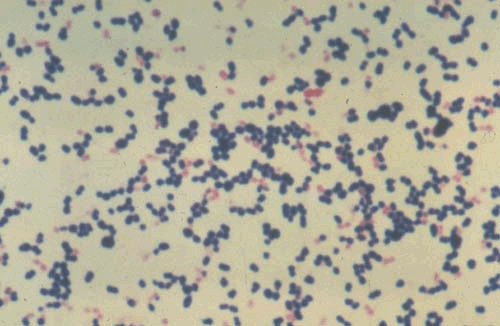
Ch 4 Micro Flashcards Chegg Com
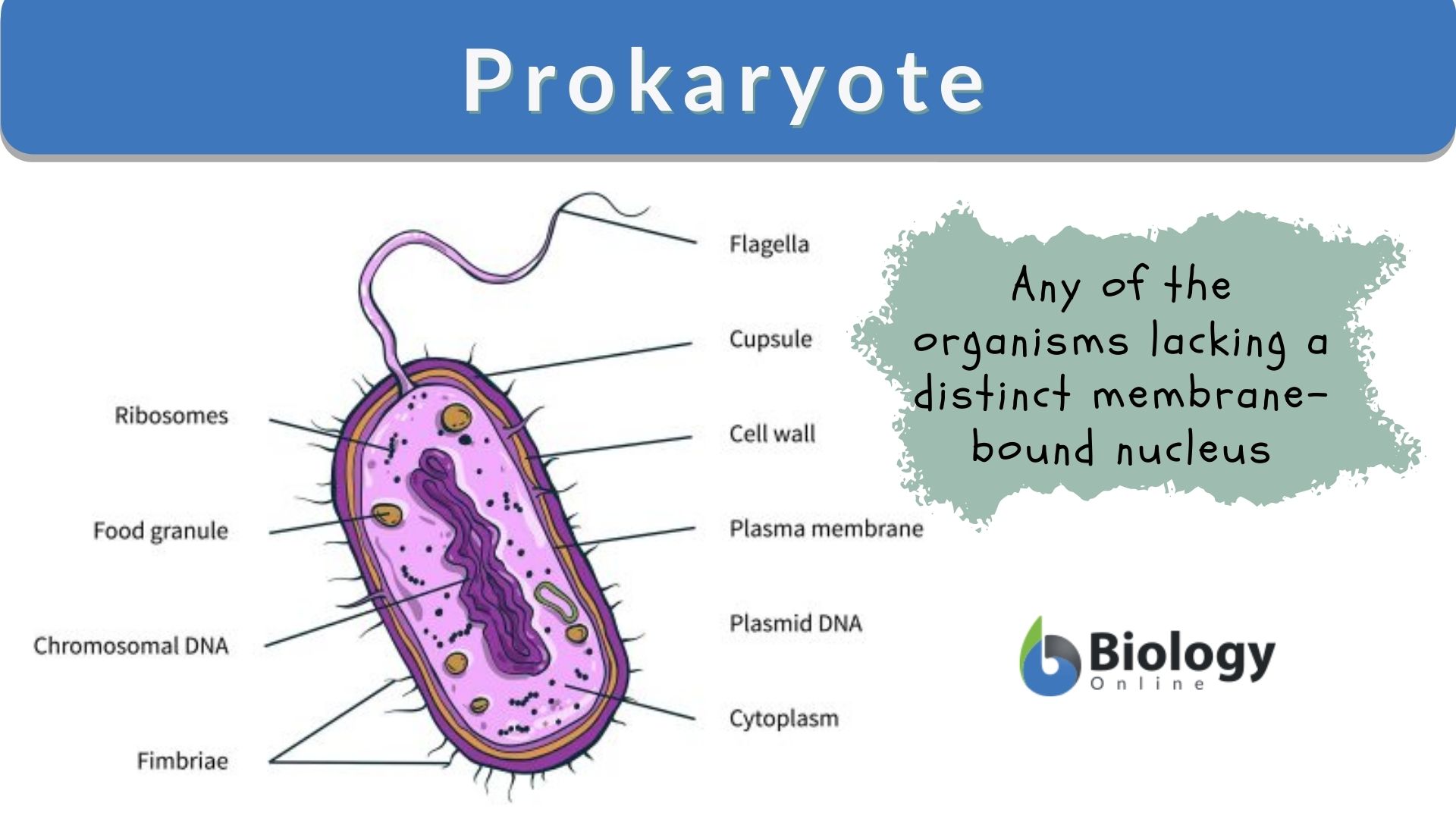
Prokaryote Definition And Examples Biology Online Dictionary
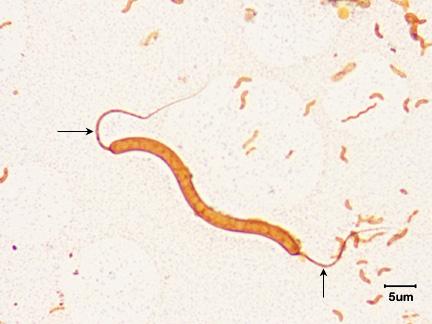
Microbiology Chapter 4 Flashcards Chegg Com

Cell Wall Structure For Gram Negative And Positive Bacteria Download Scientific Diagram

Bacterial Cell Walls Function Parts What Is A Bacterial Cell Wall Video Lesson Transcript Study Com

Peptidoglycan An Overview Sciencedirect Topics

Prokaryotic Cells Article Khan Academy

Prokaryotic Cell Structure And Comparison With Eukaryotic Cell Definition Examples Diagrams
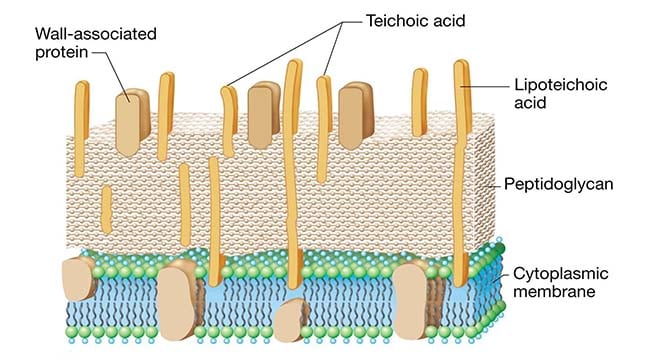
Gram Positive Cell Wall

Microbiology Chapter 4 5 Flashcards Quizlet

Do Prokaryotes Have Cell Walls Sciencing
How Does Antibiotics Stop Bacterial Cell Wall Formation Quora
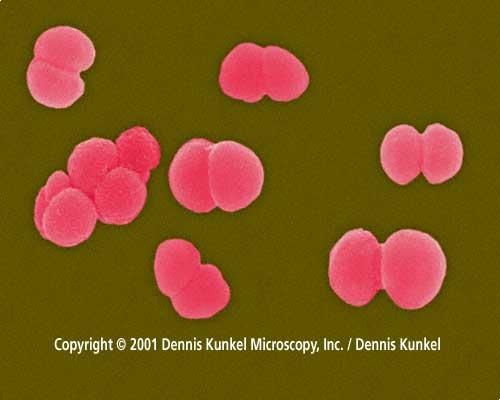
Ch 4 Micro Flashcards Chegg Com

Microbiology Chapter 4 5 Flashcards Quizlet
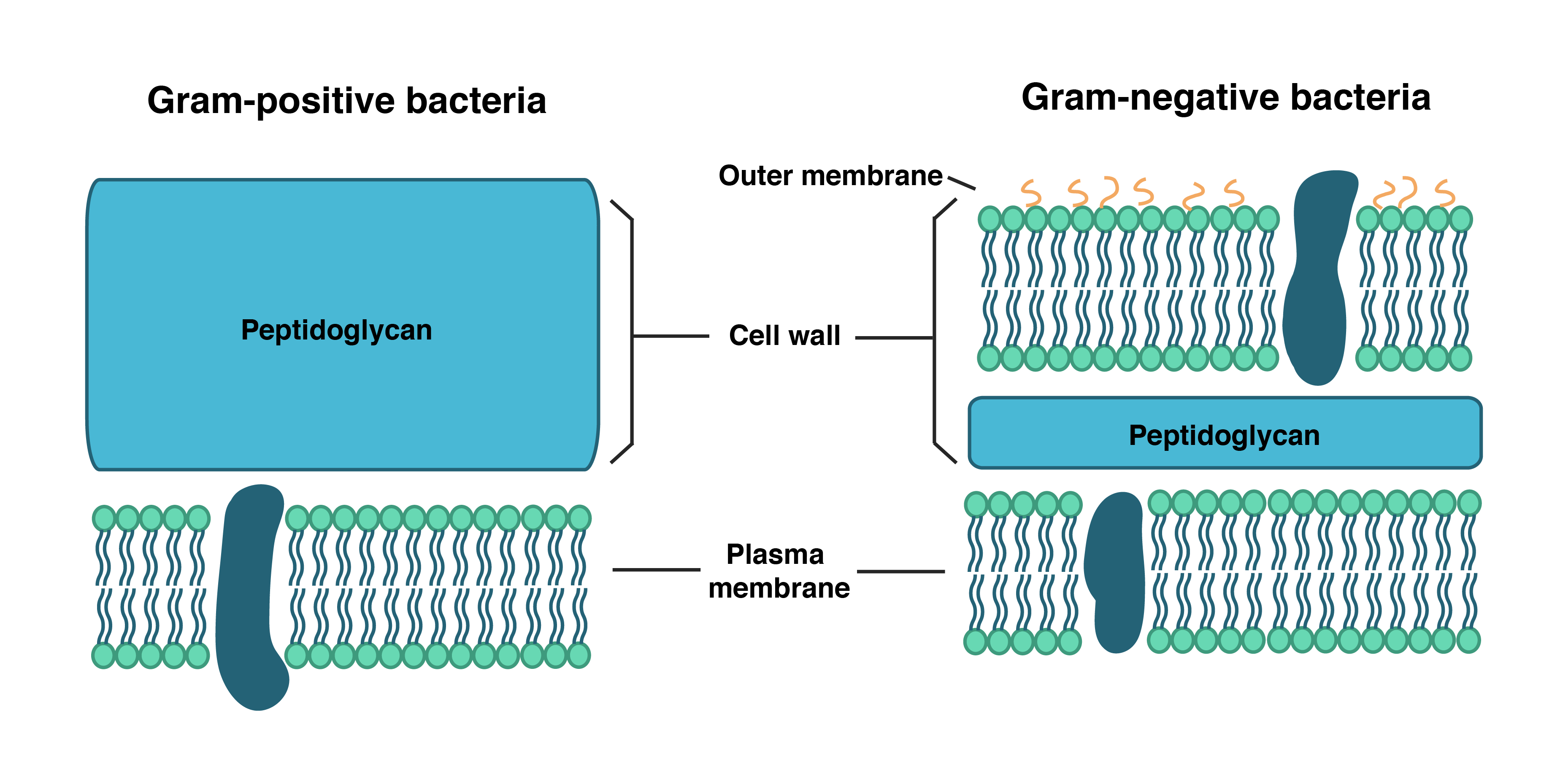
Prokaryote Structure Article Khan Academy
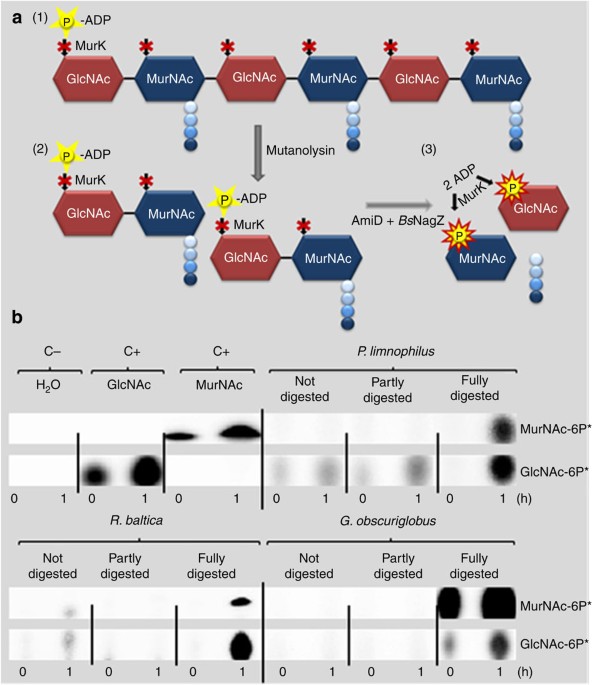
Planctomycetes Do Possess A Peptidoglycan Cell Wall Nature Communications